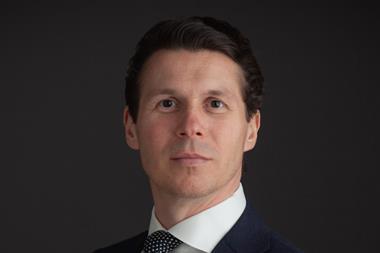Roger Flaxman looks at the future of the professional indemnity insurance market and warns that it may not stay soft for long
The professional indemnity (PI) insurance market is as soft now as it has been for many years. There is intense competition among insurers for your business and premium reductions of 40% and more have been seen in recent weeks as the PI deadline of 1 October approached.
There are predictions by some insurers, brokers and other market experts that there will soon be meltdown in the PI market because prices are now below a sustainable level of viability. This may be wishful thinking by those who will profit by increased premiums, but the facts available to support the prediction are sufficient to suggest that buyers should start to plan ahead for what they would do if these predictions come to pass.
There are two distinct dynamics in the insurance industry: the insurers and the brokers. Each has a distinct influence on price and value. To get the best out of the market, a buyer must know how to influence the interaction between the two. Currently there are nearly 38 insurers specialising in PI insurance in the UK and some 25 firms of specialist brokers. The market is led by about 25% of the specialist insurers and a similar proportion of the specialist brokers.
Selecting the right broker is as important as selecting the right insurer. Only if the two are operating efficiently can the policyholder extract the optimum benefit from the market.
Price v service
There is, unfortunately, increasing evidence that in some quarters, claims service is suffering as prices are slashed to acquire market share. Claims are resisted and, in some cases, rejected, leaving policyholders uninsured, having to engage their own lawyers to defend them and incur unbudgeted costs far in excess of the PI premiums they have paid.
At the moment, the PI market is flush with capacity and competition is fierce: 38 insurers competed for approximately £1.1bn premium income in 2005.
So what is the prediction for 2007? No one really knows. But the received wisdom at the annual Cambridge Professional Indemnity Forum conference in July 2006 predicted a further fall of up to 15% (overall) on 2006 rates.
Solicitors' benchmark
The UK solicitors' market is now seen by market practitioners as a predictor of the forthcoming years' rating/pricing levels. This is because all solicitors renew their PI policies on the same date, 1 October, causing the insurance market to determine its stance on this class of business and so set the pace for other classes.
Gary Head, underwriting director of Hiscox Professions, says: "The solicitors' equation is clear to me. Final year contributions into the solicitors indemnity fund for 1999/2000 were £250m. Taking this as a base, if we add fee growth (estimated 7% per annum) plus annual claims inflation of 5% in the intervening period, and also charge for the extra £1m of compulsory cover (raised from £1m to £2m in 2005), we get a market premium requirement of £678m. Last year the market collected only £234m (for £2m cover) against £238m the previous year (for £1m cover). As the Americans say, 'you do the math'."
The prediction this year is for reductions of up to 20% across the portfolio of solicitors' PI business. A serious claim such as was narrowly avoided in the recent Football League v Edge & Ellison case could be the trigger that sends premiums rocketing up. Historically, premiums rocket up and parachute down.
The knock-on economic effects of terrorist threats could be a trigger for escalating rates, because there is a strong case for estimating catastrophic losses. More recently, predictions of widespread flooding, both in the UK and overseas, are causing concern among insurers. Their only response to such threats is to increase premiums, restrict cover, or in some cases, withdraw cover for the most damaging perils.
Warning signs
UK PI loss ratios (the amount by which claims exceed premiums) have reached 208% in the past five years. Underwriting profit is affected by this kind of result and eventually, the market has to respond with increased rates.
When this happens, it is often sudden and savage. In the past 30 years, there have been rate increases of between 50% and 100% when the market turned and this was a cause of breakaway mutuals and other refuges to avoid the traditional insurance market.
Professional indemnity is regarded as good business by insurers because, in general, premiums can be held for considerable time before paying out claims. Some insurers regard insurance as simply a money game while others are more conscious that its reputation is based upon the success with which it meets this obligation. Price is not necessarily the best indicator either way, and there is sometimes no apparent logic between the pricing differential between one insurer and another. This makes it much harder for the typical firm buying just once a year to make a business decision as to whether to risk changing insurers for an apparently much better price.
Pastures new
There is almost unprecedented change in the specialist professional indemnity broker sector with teams from Alexander Forbes, FirstCity, PYV and Howden all moving to new pastures. Brokers changing their livery are not new.
So is it a case of follow your broker or not? Generally, it is safe to follow your broker if you like him, trust him and he has served you well for a reasonable period of time. There are methods to benchmark brokers, and can help a client make a judgment about the things that they value in the broker relationship.
The broking community will settle down within the next 12 months and there will continue to be a good supply of specialist, highly experienced brokers, most of which can cut a good deal in the market on almost any risk. Brokers have their own culture and it is a personal business where reputations and relationships do count. Finding the right match is an art, not a science.
There are dangers in moving insurers, particularly if claims are outstanding or if there is any risk that claims are in the pipeline and not yet known about, as they could be excluded by a new insurer. Extreme care must be taken with regard to changing insurers and this requires specialist advice.
The soft market will not last forever. No one knows when it will end. But statistics in the market show that prices are far below escalating levels of claims. The majority of underwriters would say they know that now is the time to increase their prices - but no one wants to be the first to do it.
If the market suddenly turns, it is likely to turn sharply and become a very hard market very quickly. The insurance industry does not seem able to smooth out these peaks and troughs. Now is the time to start planning for what you would do if the market were to suddenly turn.
Roger Flaxman is principal at Flaxman Partners. For more on the PI market see VI of the Legal Report
Hosted by comedian and actor Tom Allen, 34 Gold, 23 Silver and 22 Bronze awards were handed out across an amazing 34 categories recognising brilliance and innovation right across the breadth of UK general insurance.













































